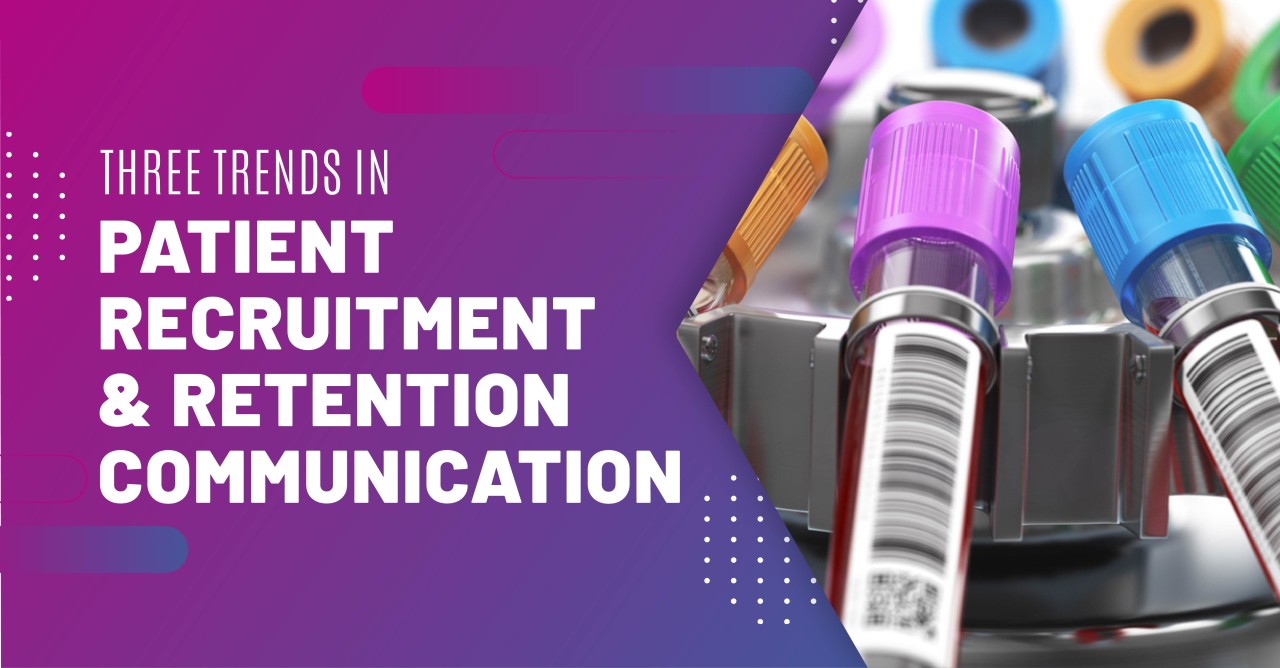
2023 Trends in Patient Recruitment and Retention Communication
January 17, 2023 | ProcessCommunication is the key to patient recruitment and retention of patients in clinical trials in 2023. Like technology, communication doesn’t stand still. This guide to three trends in communication in clinical trials will help you adapt this year.
Communicating on social media needs to adapt
Facebook has been an important channel to recruit patients for clinical trials for many years. Personalized adverts could reach patients using detailed targeting options such as health interest indicators. But in April 2022 Facebook changed its rules when it removed targeting with ‘topics people may perceive as sensitive’. These included healthcare topics such as ‘lung cancer awareness’, ‘World Diabetes Day’ and ‘chemotherapy’.
CROs and healthcare communications agencies, therefore, need to explore a range of alternative ways to reach patients directly.
In an interview with Dan Sfera, Prime Globals’s Ross Jackson suggests a range of additional ways to communicate with patients. These include reaching out to leaders of patient advocacy groups. Reddit and other platforms host these kinds of community groups.
 Take care with your outreach though, says Jackson, as a sales-led approach is unlikely to be received positively. A collaborative approach based on serving communities with information, dialogue and education may lead to more long-term benefits.
Take care with your outreach though, says Jackson, as a sales-led approach is unlikely to be received positively. A collaborative approach based on serving communities with information, dialogue and education may lead to more long-term benefits.
Researching the media that target patient groups consume is key. For example, it’s important to know which channels your target community engages with. Is it podcasts? Do they consume newer social media like Tiktok? And don’t forget traditional media. It might be that radio and newspapers might still be relevant channels in some territories.
Communicating across multiple platforms is key
DCTs and technical innovations have enabled clinicians to communicate with patients remotely. This has provided convenience for patients, and eliminated the time and anxiety of traveling to clinical trial sites.
But the technology behind it presents challenges too. Increased use of digital channels such as apps, websites, and video has, in turn, increased complexity in communicating with patients. Ensuring text and images flow between each technology is a challenge that many of our clients face.
Our experience is that flexible processes are key to ensuring that data, text and audiovisual materials can seamlessly flow between each channel. Therefore, flexible processes should be developed in a collaborative way with experts steeped in clinical trial workflows. After all, both technology and project management expertise are required to manage materials through APIs and document management systems.
Communicating for diversity, equity and inclusion
 Technology alone won’t enable effective remote communication with patients. As you deploy apps to guide patients to report outcomes, build websites to gather data, and use social media to attract patients, it’s how you communicate that will enable you to achieve your recruitment and retention goals. From completing informed consent forms to following medical instructions, communication is vital.
Technology alone won’t enable effective remote communication with patients. As you deploy apps to guide patients to report outcomes, build websites to gather data, and use social media to attract patients, it’s how you communicate that will enable you to achieve your recruitment and retention goals. From completing informed consent forms to following medical instructions, communication is vital.
That’s not easy with the need to enroll patients that are representative of the groups you are seeking to attract. Diversity, equity, and inclusion are no longer seen as box-ticking exercises. In a case study Staci Hargraves, VP of Patient and Portfolio Solutions, Janssen R&D, said, ‘We know that diseases and drugs may impact people differently based on their race and ethnicity, so the alignment of clinical trial enrollment with patient population demographics is key.’
Furthermore, a 2021 article in the Lancet highlighted that ‘an important under-researched area in the context of diversity is methods to accommodate the language needs of under-served ethnic minorities.’
At Conversis, we believe the role of language and translation in clinical trials deserves prominence. After all, patients have to understand the materials that they see and hear in clinical trials. This means that written and verbal communication needs to take into account the language, reading levels and cultural sensitivities of target groups.
That’s why language services are vital for recruiting and retaining patients effectively. Translation is the best known of these, but other services can be just as important in aiding understanding.
For example, transcreation enables you to transcend language and cultural boundaries to deliver your message to underrepresented groups. This also involves checking that images resonate well in each target country. Multilingual voiceovers can also be effective for diversity in recruitment and retention.
The next steps for patient communication
Next time you’re planning on recruiting, make sure you’re allowing time to reflect on communication. When considering how to achieve clinical trial objectives, take the time to identify the communication methods that will best support them. At Conversis, we believe that how you communicate with patients should be a top priority.
If you’d like to have a conversation about your life sciences translation in 2023 drop us a line here.

